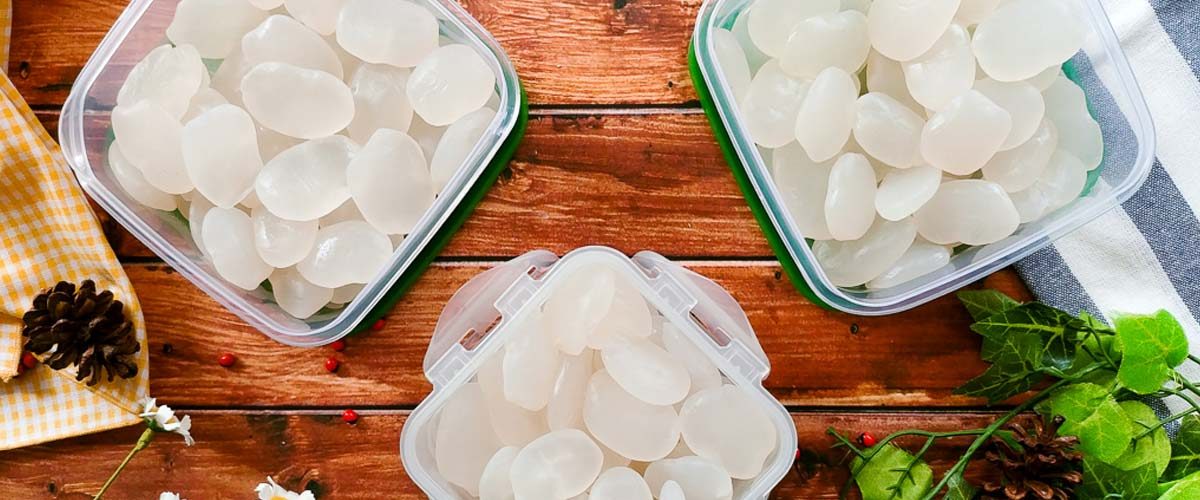‘Kolang-kaling’ is an Indonesian fruit. It has very high water content and also contains ash, fat, protein and carbohydrate. This fruit contains fiber that can aid digestion and serve as a source of galacto-mannan polysaccharide that carries mannose and galactose1.
‘Kolang-kaling’ produces jam with a pale color, which is an important consideration for consumer appeal. To increase the consumer value of ‘Kolang-kaling’ jam, shredded ‘Java Plum’ peel containing anthocyanin pigments can be added as a natural colorant2. Anthocyanin also has antioxidant, anti-carcinogenic, anti-diabetic, neuro-protective and anti-inflammatory activity.
Another characteristic of jam is texture, which can be enhanced through the formation of pectin-sugar-acid gels. Citric acid is frequently used to acidify, neutralize and maintain the degree of acidity of foodstuffs as well as to alter taste and color. Citric acid is also used as a preservative. In jam production, the addition of citric acid can enhance gel formation. The level of acidity also inversely affects the stability of anthocyanin, which is more stable at acidic pH than at alkaline pH3.
In this context a new study was designed to examine how the addition of varying amounts of both ‘java plum’ peel and citric acid affected the anthocyanin content and antioxidant activity of ‘Kolang-kaling’ jam4.
The addition of citric acid with ‘java plum’ peel had a synergistic effect on polyphenol content. Anthocyanin is a polyphenol that is stable at low pH and contributes to the total polyphenol content. Citric acid is a secondary antioxidant that is often added to fats and oils in combination with primary antioxidants and thus yields a synergistic effect to increase the activity of primary antioxidants.
Citric acid is also a chelating agent that synergizes with polyphenols to bind oxidizing metals. Some antioxidants such as citric acid, ascorbic acid and phospholipids are synthetic antioxidants that in themselves have no antioxidant activity but can enhance the activity of actual antioxidants.
It was established that the addition of ‘java plum’ peel and citric acid significantly and dose-dependently affected the total phenol and anthocyanin of ‘Kolang-kaling’ jam. Jam produced with higher amount of ‘java plum’ and citric acid had higher total phenol and anthocyanin content, as well as higher antioxidant activity, as evidenced by lower IC50 values. The highest antioxidant activity was seen for jam made with 25% ‘java plum’ peel and 0.4 g citric acid. The value of antioxidant activity in ‘Kolang-kaling’ jam obtained was relatively weak, but this food could still have potential use as an antioxidant substance.

Keywords:
Kolang-kaling, jamblang, Syzygium cumini peel, citric acid, anthocyanin, total phenol and antioxidant activity, Indonesian fruit, java plum, polyphenols, secondary antioxidant, nutrition.
References:
- Torio, M.A.O., J. Saez and F.E. Merca, 2006. Physicochemical characterization of galactomannan from sugar palm (Arenga saccharifera Labill.) endosperm at different stages of nut maturity. Philippine J. Sci., 135: 19-30.
- Sayuti, K., R. Yenrina and T. Anggraini, 2017. Characteristics of “Kolang-kaling’’ (Sugar palm fruit jam) with added natural colorants. Pak. J. Nutr., 16: 69-76.
- Rein, M., 2005. Copigmentation reactions and colour stability of berry anthocyanins. EKT Series 1331. University of Helsinki, Department of Applies Chemistry and Microbiology, pp: 19.
- Anggraini, T., Kurniawan, Y., Yenrina, R. and Sayuti, K., 2018. Effect of ‘Jamblang’ (Syzygium cumini) Peel and Citric Acid Addition on Antioxidant Activity of ‘Kolang-kaling’ Jam. Paki. J. Nutri., 17: 140-145.
















Add comment